Eduard's 1/48 scale
Messershmitt Bf 108
Birthday Taifun
by Roland Sachsenhofer

A first look at the present depiction of a Bf 08 Taifun will quickly make the expert frown, because neither the identification on the fuselage nor those on the wings seem to make sense or should even be brought into line with a real example. This analysis is correct - even though the model at hand refers to a reality that was more real and formative for me personally than any historical or technical frame of reference could be.
But before I come to the dissolution of the meaning of "S-AXI", "14860" or the number "60" in the white circle, I would like to say a few words about the, so to speak, real parts of this model building project. The keywords of the historical and technical frame of reference have already been mentioned, so it is good that the Bf 108 Taifun has a lot to offer in both categories!
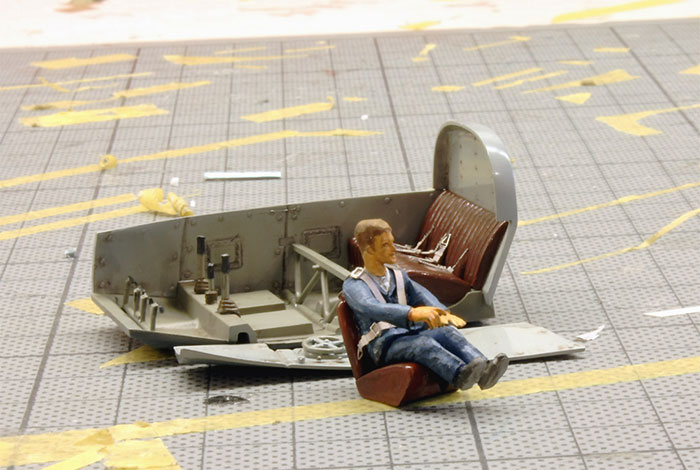
The Bf 108 marks the beginning of all-metal construction at Messerschmitt. With own developments like the M34 or the M35 financially fairly successful, Willy Messerschmitt had managed with home-made cabals and intrigues to make a real mess with the authorities of the new "Third Reich" until the beginning of the 1930s.
In the person of Erhard Milch, then Lufthansa Director and, as "General Aircraft Master", responsible for the procurement policy of the rebuilding Luftwaffe, he found a passionate opponent who wanted to keep Messerschmitt away from the meat pots of uninhibited armament.
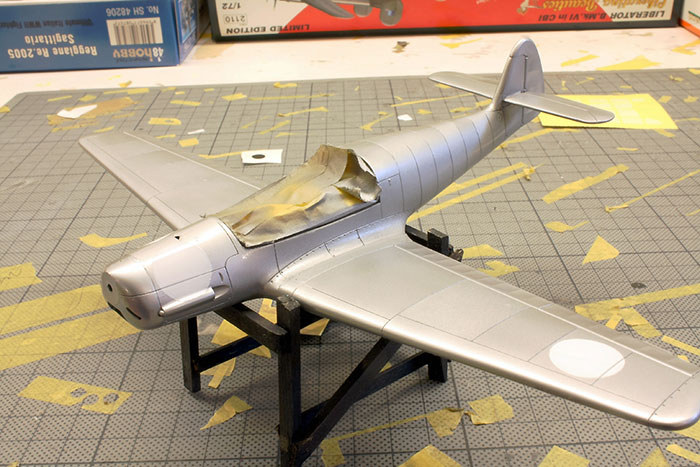
So Messerschmitt AG was invited to participate in the tender for the new standard fighter aircraft of the Luftwaffe, alongside the established suppliers Arado, Focke Wulf and Heinkel, only as a mercy. Nobody expected a competitive product of the cold-set and in this field also completely inexperienced Messerschmitt.
But Messerschmitt AG had an ace up its sleeve. 1934 was also the birth year of the M37 project, later to be calles Bf 108, the first all-metal aircraft from this manufacturer. Designed as a cantilever low-wing aircraft with retractable landing gear, the project was conceived as an aerodynamically high-quality cabin cruiser. This configuration, together with the arrangement of the four seats under a closed canopy, was to define for the first time a standard for high-performance sports and passenger aircraft that is still valid today.
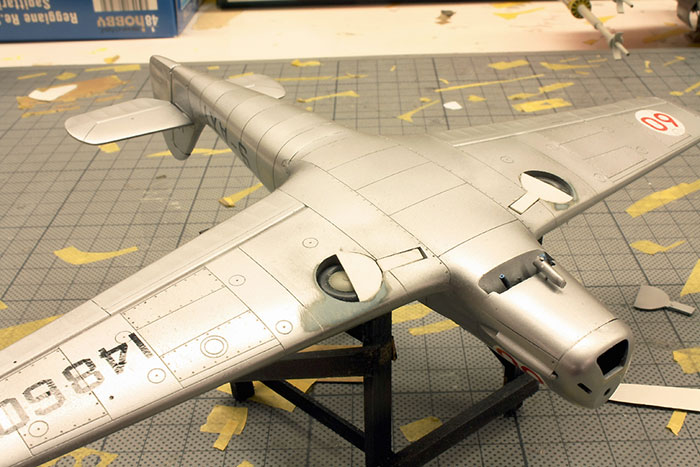
A characteristic feature typical of Messerschmitt's aircraft was the design based on the principle of self-supporting exterior planking. This means that the metal planking of the fuselage half-shells ensured stability, while the corresponding inner workings only increased the underlying strength. The weight reduction made possible in this way was entirely to the taste of the lightweight construction fanatic Messerschmitt.
If the design was a real "high-flyer" due to this constructional layout alone, Messerschmitt added to it: the aircraft was equipped with lift-increasing slit flaps on the leading edges of the wings, landing flaps and a retractable landing gear, which was new at the time. The Bf 108 was revolutionary for its time and a winner in every respect.
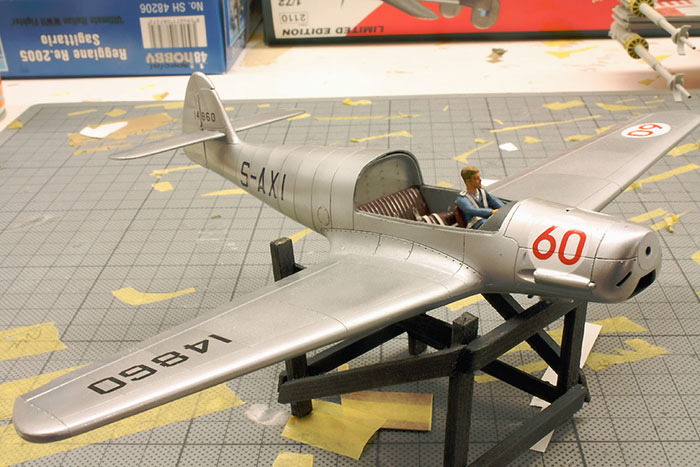
This was quickly followed by international victories in the 1934 “Europarundflug”, 2nd and 4th place in the 1937 “Oasenrundflug”, and victories in the 1938 “Sternflug” to Hoggar and the one to Dinard, which impressively demonstrated the outstanding performance of the Bf 108. The further career should lead the Bf 108 into the Luftwaffe as a widely used courier and liaison aircraft. Thanks to a licensed production in France, the history of the Bf 108 was far from over even after 1945.
For Messerschmitt AG itself, the greatest success of the 108 was probably the rescue of the fighter tender of 1934. The experience gained with the Taifun's design enabled Messerschmitt to send a design into the race for the new Luftwaffe fighter with the "109", which not only finally proved to be the winner of the tender, but with over 33000 Bf 109s built, it was to become one of the great aircraft legends. If one compares Bf 108 and 109, the technical layout from the revolutionary automatic splitting flaps to the novel self-supporting fuselage shells is identical.
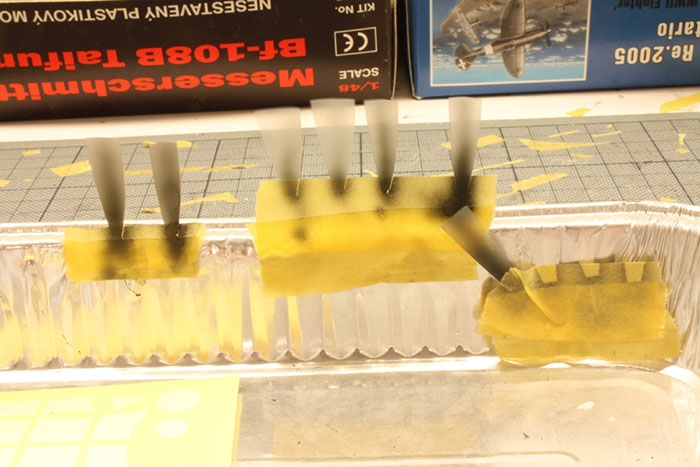
Finally I may solve the mystery of the strange markings on my Bf 108. This model comes from a parallel built triplet of the kit from Eduard. I wanted to dedicate one of the models as a birthday present to my dear brother, who celebrates his 60th birthday these days. On which day? One can fix the 14th of August by the combination of the identification number! "Saxi" is a nickname that has accompanied both my brother and myself in intimate circles since childhood. I will not comment on the number 60 any further after these explanations
This gift is a small thank you for the brotherly affection and the patience with which he, as the seven years older "big brother", let little Roland participate in his own modelling adventures. My memories of my childhood are still enriched by the hours of model airplane tinkering together and the interest in flying that unites us. The latter has remained with both of us, the former I have revived for me. So this project was a good opportunity for me to congratulate and remember this wonderful time!
A final word about the model. Since the machine is shown in flight, a rotating propeller was a necessity. As with several models in the meantime, I carefully airbrushed thin clear film to approximate its appearance. Several samples are necessary to select the most useful representation of two swirling props from the better ones. The illusion works reasonably well on the three-dimensional original, but the two-dimensional photo, which "freezes" time, certainly flatters the impression additionally. The "aerial photographs" are taken from a gimmick with a suitable image processing program.
If you are interested in the building process, please have a look here on Scalemates: https://www.scalemates.com/profiles/mate.php?id=10148&p=albums&album=61647
As ever, remarks will be appreciated: ro.sachsenhofer@gmx.at
Model, Images and Text Copyright ©
2020 by Roland Sachsenhofer
Page Created 29 September, 2020
Last Updated
29 September, 2020
Back to HyperScale Main Page

|
Home
| What's New | Features | Gallery | Reviews | Reference | Resource Guides | Forum |